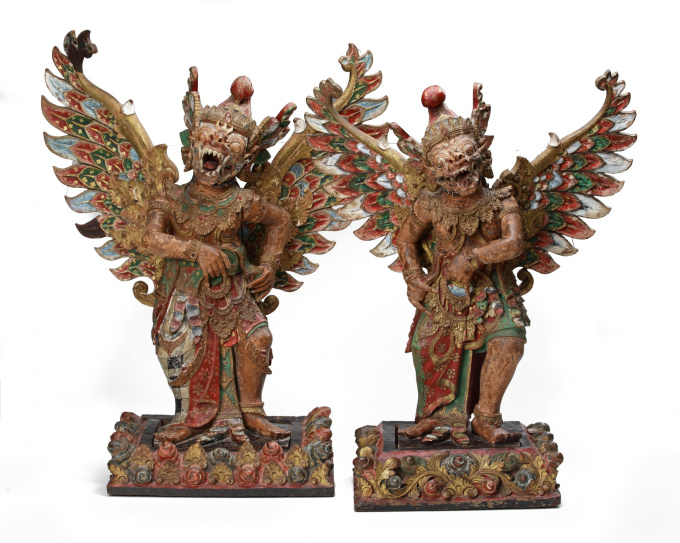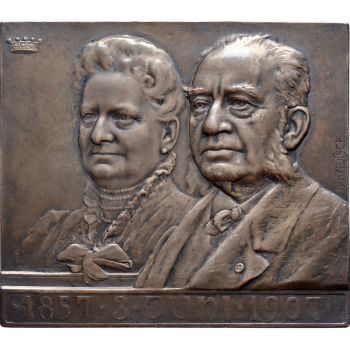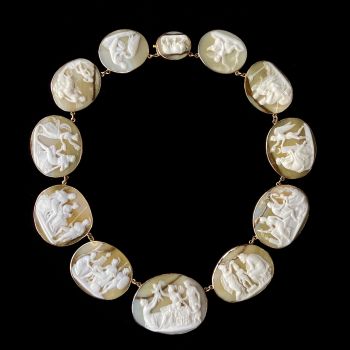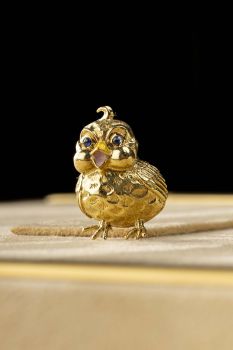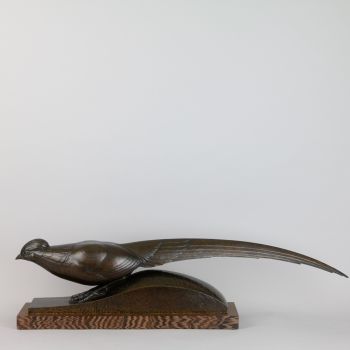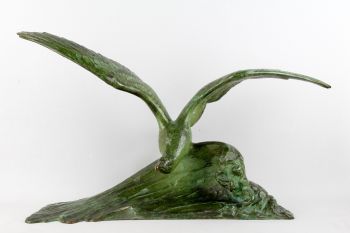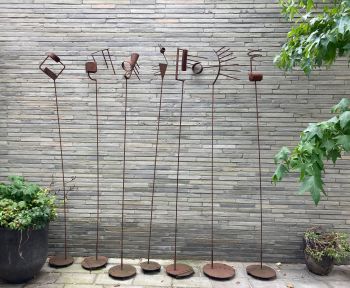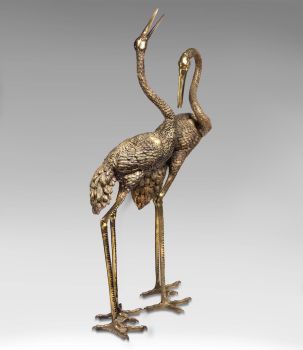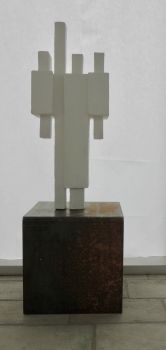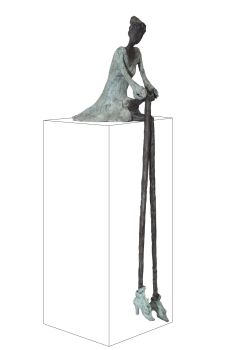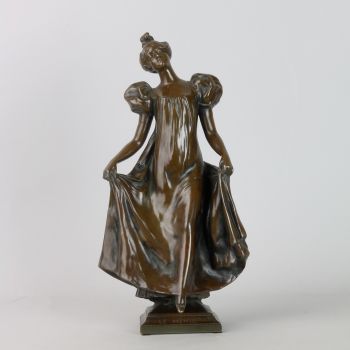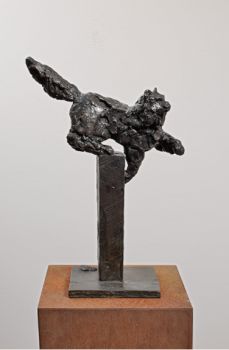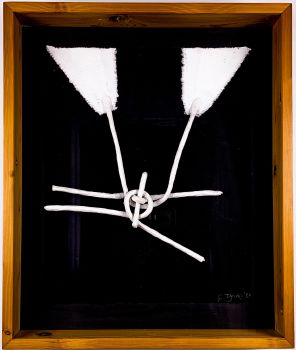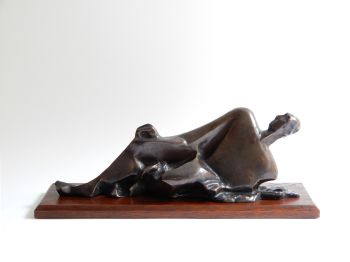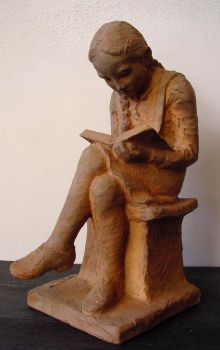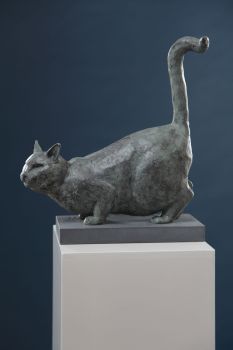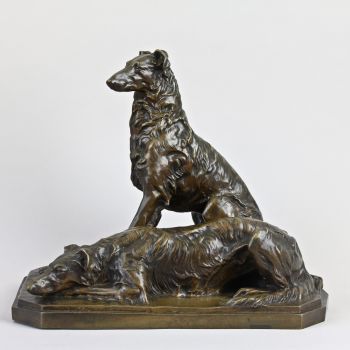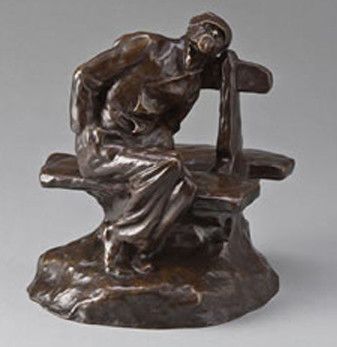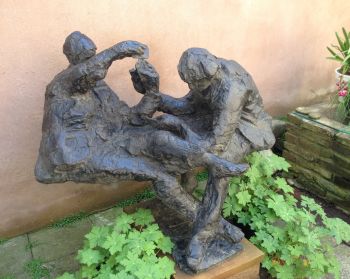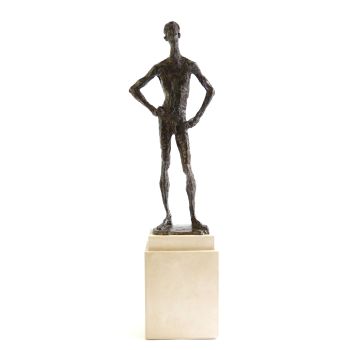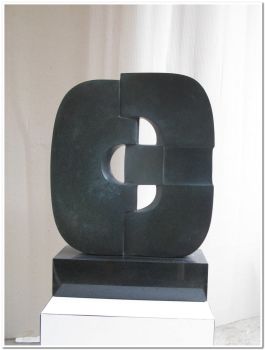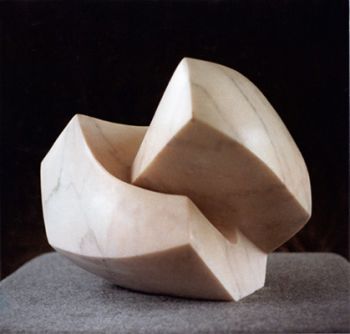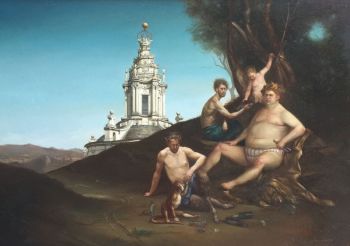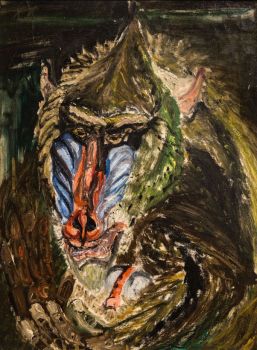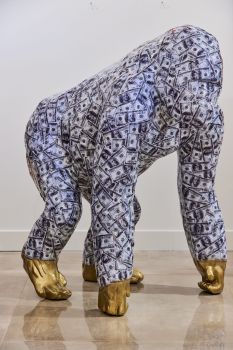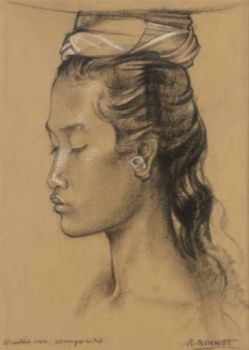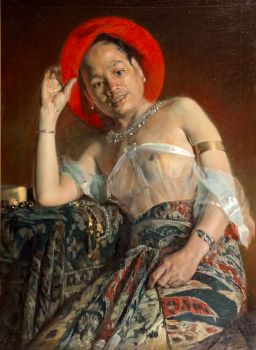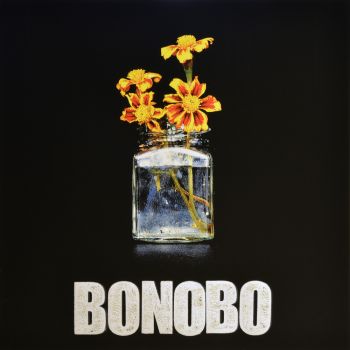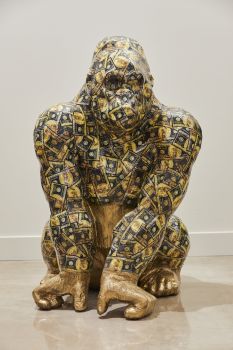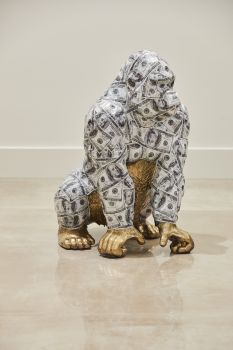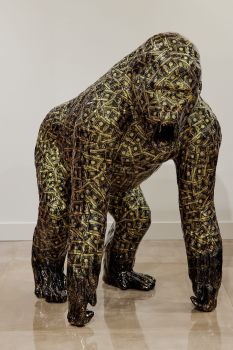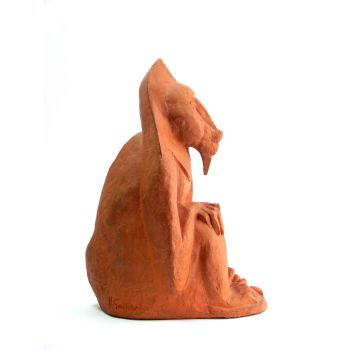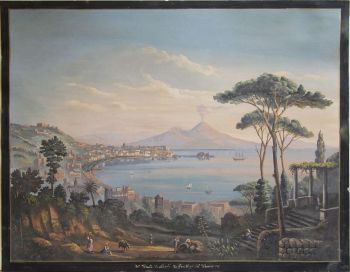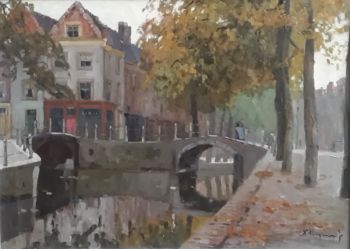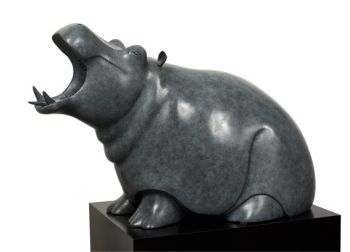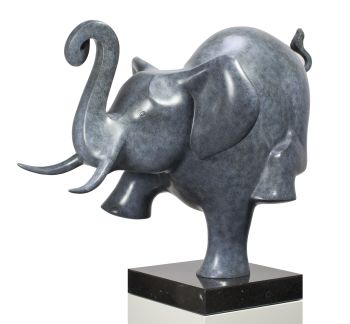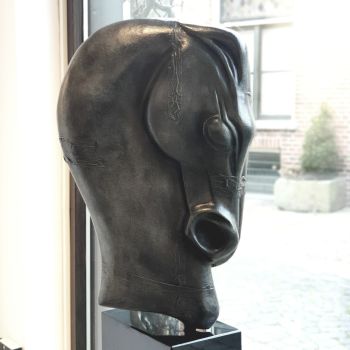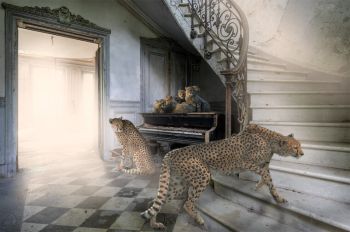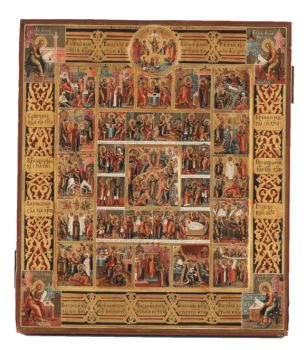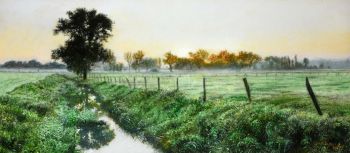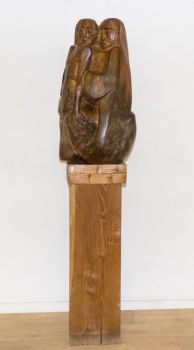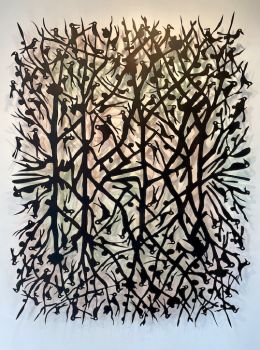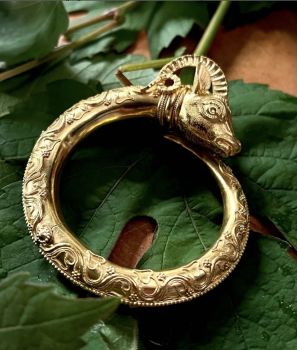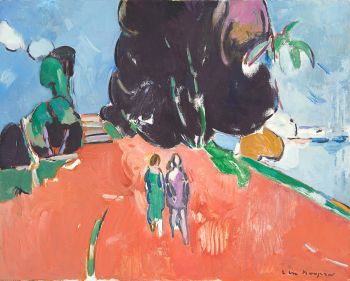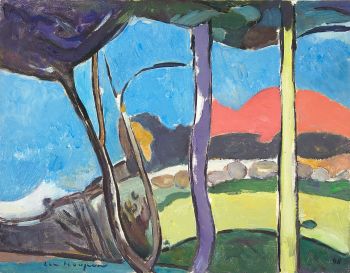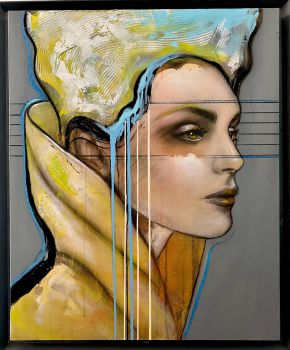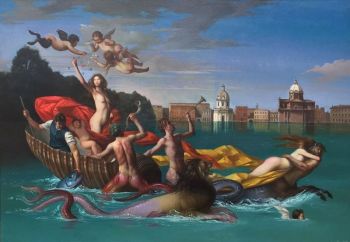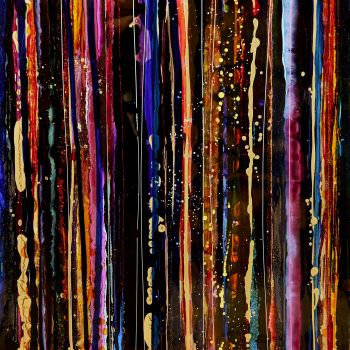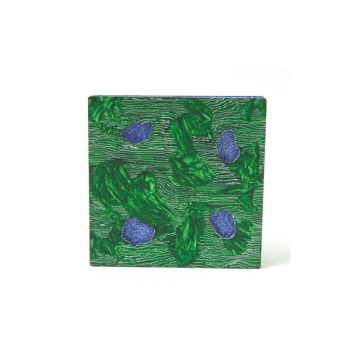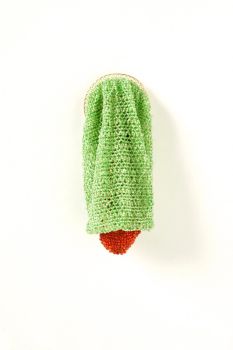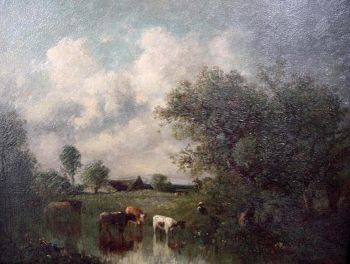Dos estatuas de madera policromada, en el norte de Bali, Singaraja, Buleleng Regence, de finales del 1900
Artista Desconocido
MaderaMadera de Nangka (yaca)PigmentoOroPintura
78 cm
ConditionMint
Actualmente no disponible a través de Gallerease
- Sobre la obra de arteTwo polychrome wooden statues North Bali, Singaraja, Buleleng Regency, late 19th century
Nangka (jackfruit) wood and pigments and gold
Height: 78 cm and 70 cm (2)
These two winged statues represent the red monkey twins Sugriwa and Subali as they are called in Bali. However, in spite of being identical twins they have different fathers; Sugriwa’s father is Surya, the sun god and Subali’s Indra, the king of gods. Subali, the king of the vahana, the monkeys and bears, believes that his brother Sugriwa is plotting to steal his throne so he drives him away. Sugriwa is introduced by his friend Hanoman, the king of the white monkeys, to Rama who agrees to battle Subali on Sugriwa’s behalf in exchange for the promise that Sugriwa will help him invade Lanka to battle Rawana who has kidnapped his wife, Sita. Rama defeats and kills Subali who at the time of his death realizes that Sugriwa had no ill intentions against him and forgives him for his death. The pair represent both sibling rivalry and the ultimate revelation of the truth. These two statues belong to a class of statues made in the vicinity of Singaraja from about 1890 till 1920, when the were very popular among a growing number of colonials in north Bali. There are early 20th century photos of this type of statues being sold in Surabaya and colonial fairs.
A large number of Bali statues in Dutch museums belong to this class.
I am grateful to Bruce Carpenter for his assistance with this catalogue entry. - Sobre el artista
Puede suceder que un artista o creador sea desconocido.
Algunas obras no deben determinarse por quién está hecho o por (un grupo de) artesanos. Algunos ejemplos son estatuas de la Antigüedad, muebles, espejos o firmas que no son claras o legibles, pero también algunas obras no están firmadas en absoluto.
También puedes encontrar la siguiente descripción:
•"Atribuido a …." En su opinión, probablemente una obra del artista, al menos en parte.
•“Estudio de….” o “Taller de” En su opinión, una obra ejecutada en el estudio o taller del artista, posiblemente bajo su supervisión
•“Círculo de…” En su opinión, una obra del período del artista que muestra su influencia, estrechamente asociado con el artista pero no necesariamente su alumno.
•"Estilo de …." o “Seguidor de…”. En su opinión, una obra ejecutada al estilo del artista pero no necesariamente por un alumno; puede ser contemporáneo o casi contemporáneo
•"Manera de …." En su opinión una obra al estilo del artista pero de fecha posterior
•"Después …." En su opinión, una copia (de cualquier fecha) de una obra del artista
•“Firmado…”, “Fechado…” o “Inscrito” En su opinión, la obra ha sido firmada/fechada/inscrita por el artista. La adición de un signo de interrogación indica un elemento de duda.
•“Con firma…”, “Con fecha…”, “Con inscripción…” o “Lleva firma/fecha/inscripción” en su opinión la firma/fecha/inscripción ha sido añadida por alguien que no es el artista
Artwork details
Related artworks
- 1 - 4 / 12
Klaas II Mobach
Hanna Mobach, daughter of the sculptor Klaas Mobach, reading1950 - 1970
Precio a consultarKunsthandel Pygmalion
1 - 4 / 24Artista Desconocido
Holandeses en miniatura (Netsuke)1700 - 1900
Precio a consultarZebregs & Röell - Fine Art - Antiques
1 - 4 / 24Artista Desconocido
UITGEBREIDE FEESTDAGENIKOON MET PASSIECYCLUS19th century
Precio a consultarHeutink Ikonen
Dutch School
Llegada de un holandés de las Indias Orientales a Table Bay18th century
Precio a consultarZebregs & Röell - Fine Art - Antiques
Fontana
Broche-colgante de canasta de flores1900 - 1905
Precio a consultarAns Hemke-Kuilboer Juwelier & Antiquair
Artista Desconocido
Icono de madera monumental: San Nicolás de Mozaisk1600 - 1650
Precio a consultarKunsthandel H.W.C. Dullaert Icons
1 - 4 / 24

